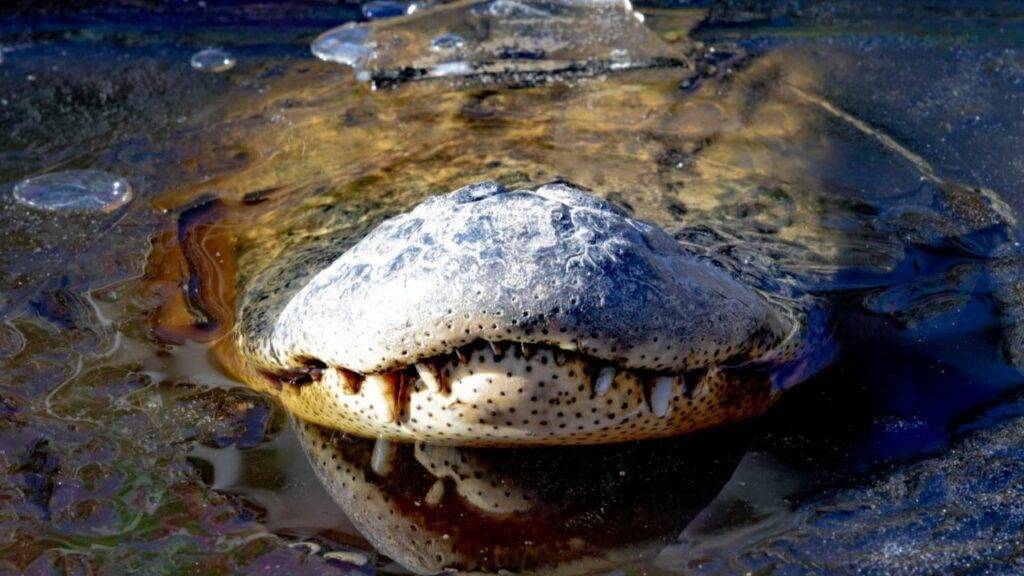In an extraordinary spectacle, the recent deep freeze that swept through the U.S. South had an unexpected impact on the resident alligators at a North Carolina wildlife park. Caught in the icy embrace of winter, these formidable creatures found themselves adapting in a rarely witnessed manner.

Frozen Alligators North Carolina
On Jan 22, Reuters reported on the gripping spectacle at a North Carolina wildlife park, where a group of alligators was forced into an unfamiliar situation due to the deep freeze. The cold temperatures led to the formation of an ice layer, trapping the alligators beneath it.
The only visible parts were their toothy snouts, defiantly protruding above the frozen surface, allowing them to breathe. This unusual behavior is a rarely witnessed adaptation that enables alligators to endure cold snaps by essentially freezing in place.
An Alligators Found in North Carolina Video Shows
The video, widely shared on various platforms, captures the mesmerizing sight of alligators in North Carolina adapting to the deep freeze. As reported by Reuters, the alligators are seen trapped beneath an ice layer, with only their toothy snouts protruding above the frozen surface. This remarkable adaptation allows them to breathe while effectively frozen in place.
The Alligators’ Survival Strategy
As the deep freeze persists, the alligators remain in a state of suspended animation, relying on their unique physiology to endure the extreme cold. The situation has sparked curiosity among locals and nature enthusiasts, prompting many to document this rare occurrence.
A video shared on Yahoo News showcases the frozen alligators in North Carolina, providing a visual representation of the surreal scene. The footage highlights the resilience of these creatures as they navigate the challenges imposed by nature.
Brumation: The Reptile Version of Winter Hibernation
Experts describe this intriguing phenomenon as an extreme form of brumation, which is the reptile equivalent of winter hibernation. During brumation, reptiles slow down their metabolic rate, becoming less active and conserving energy to endure the colder months. In the case of these alligators, the ice layer serves as a natural barrier, shielding them from the harsh external environment.


